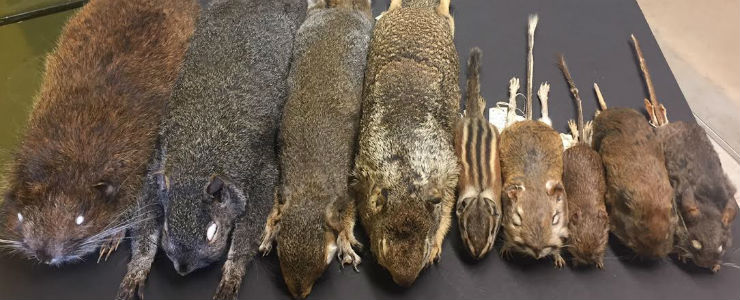Rodentia: Rodents
Infraclass: Placentals
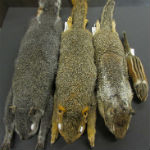 Family: Sciuridae (Squirrels)
Family: Sciuridae (Squirrels)
The Sciuridae family consists of squirrels, chipmunks, marmots, and prairie dogs. They occupy a variety of niches and range all over the world in different habitats. Their main diet includes seeds, grains, nuts, acorns, fruit, and green vegetation.
Pictured: Sciurus griseus (Western Gray Squirrel), Sciurus carolinensis (Eastern Gray Squirrel), Otospermophilus beecheyi (California Ground Squirrel), Tamias speciosus (Lodgepole chipmunk)
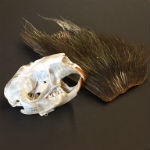 Family: Erethizontidae (Porcupines)
Family: Erethizontidae (Porcupines)
The Erethizontidae family represents all New World porcupine who have modified their hair into spines. They are nocturnal and are primarily herbivorous, with the exception of eating some insects and small reptiles.
Pictured: Erethizon dorsathum skull and skin (Porcupine)
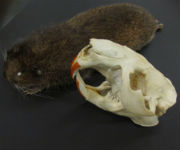
Family: Castoridae (Beavers)
Beavers make up the very small family of Castoridae. They are a semiaquatic family with thick fur for thermoregulation. They have a moderately long and flat tail used for swimming.
Pictured: Castor canadensis skull and skin (American beaver)
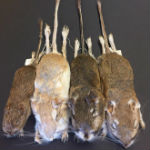 Family: Heteromyidae (Pocket Mice & Kangaroo Rats)
Family: Heteromyidae (Pocket Mice & Kangaroo Rats)
The Heteromyidae family consists of kangaroo rats, kangaroo mice, pocket mice, and spiny pocket mice. They live in burrows in deserts and grasslands. The distinguishing factors of heteromyids are their cheek pouches for food storage and their extremely large bulla, a hollow bony structure on the back portion of the skull, for great hearing.
Pictured (left to right): Chaetodipus californicus (California pocket mouse), Dipodomys deserti (Desert Kangaroo Rat), Dipodomys venustus (Narrow-faced Kangaroo Rat), Dipodomys heermanni (Heerman's Kangaroo Rat)
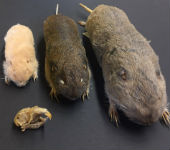 Family: Geomyidae (Pocket Gophers)
Family: Geomyidae (Pocket Gophers)
Pocket gophers are burrowing rodents who create extensive tunnel systems. They are fossorial herbivores who use their teeth and claws for excavation. Like heteromyids, they also have cheek-lined pouches for food storage. Gophers are commonly found in grasslands or agricultural fields and are a common pest for gardens.
Pictured (left to right): Thomomys bottae (Albino Pocket Gopher), T. bottae skin and skull (Botta's Pocket Gopher), Thomomys sp.
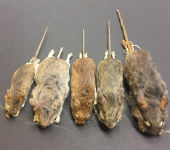 Family: Cricetidae (Deer Mice, Woodrats, & Relatives)
Family: Cricetidae (Deer Mice, Woodrats, & Relatives)
Subfamily: Neotominae
Cricetidae is an extremely diverse family that includes all New World rats and mice, lemmings, voles, and muskrats. They have a wide geographic range and a variety of different eating habits.
For a guide on the difference between Peromyscus truei and Peromyscus boylii, click here.
Pictured (left to right): Reithrodontomys megalotis (Western Harvest Mouse), Onychomys leucogaster (Grasshopper Mouse), Peromyscus maniculatus (North American Deermouse), Peromyscus truei (Pinon Deermouse), Peromyscus californicus (California Deermouse)
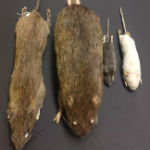 Famliy: Muridae (Old World Rats & Mice)
Famliy: Muridae (Old World Rats & Mice)
Muridae is the largest family of rodents containing over 700 species of Old World rats and mice. They include the common house mice, roof rats, and brown rats who are often found near cosmopolitan areas.
